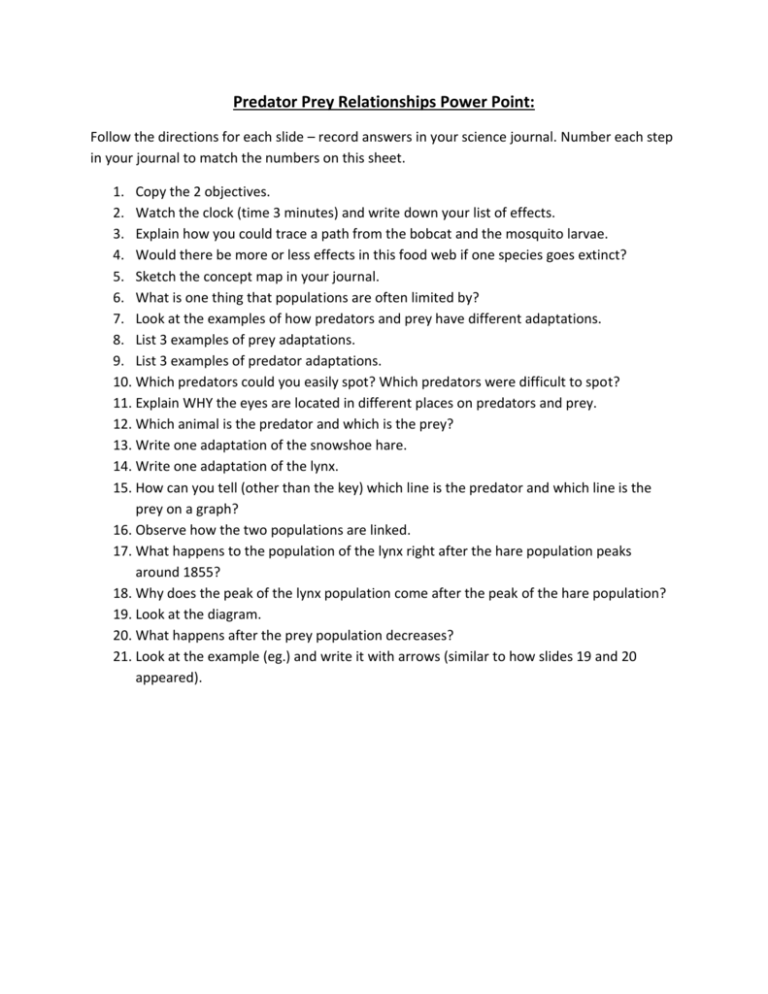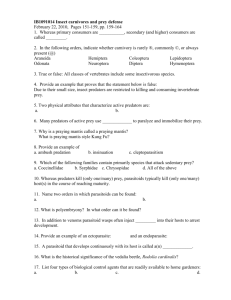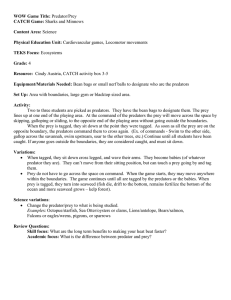Predator Prey Relationships: Presentation Guide
advertisement

Predator Prey Relationships Power Point: Follow the directions for each slide – record answers in your science journal. Number each step in your journal to match the numbers on this sheet. 1. Copy the 2 objectives. 2. Watch the clock (time 3 minutes) and write down your list of effects. 3. Explain how you could trace a path from the bobcat and the mosquito larvae. 4. Would there be more or less effects in this food web if one species goes extinct? 5. Sketch the concept map in your journal. 6. What is one thing that populations are often limited by? 7. Look at the examples of how predators and prey have different adaptations. 8. List 3 examples of prey adaptations. 9. List 3 examples of predator adaptations. 10. Which predators could you easily spot? Which predators were difficult to spot? 11. Explain WHY the eyes are located in different places on predators and prey. 12. Which animal is the predator and which is the prey? 13. Write one adaptation of the snowshoe hare. 14. Write one adaptation of the lynx. 15. How can you tell (other than the key) which line is the predator and which line is the prey on a graph? 16. Observe how the two populations are linked. 17. What happens to the population of the lynx right after the hare population peaks around 1855? 18. Why does the peak of the lynx population come after the peak of the hare population? 19. Look at the diagram. 20. What happens after the prey population decreases? 21. Look at the example (eg.) and write it with arrows (similar to how slides 19 and 20 appeared).











